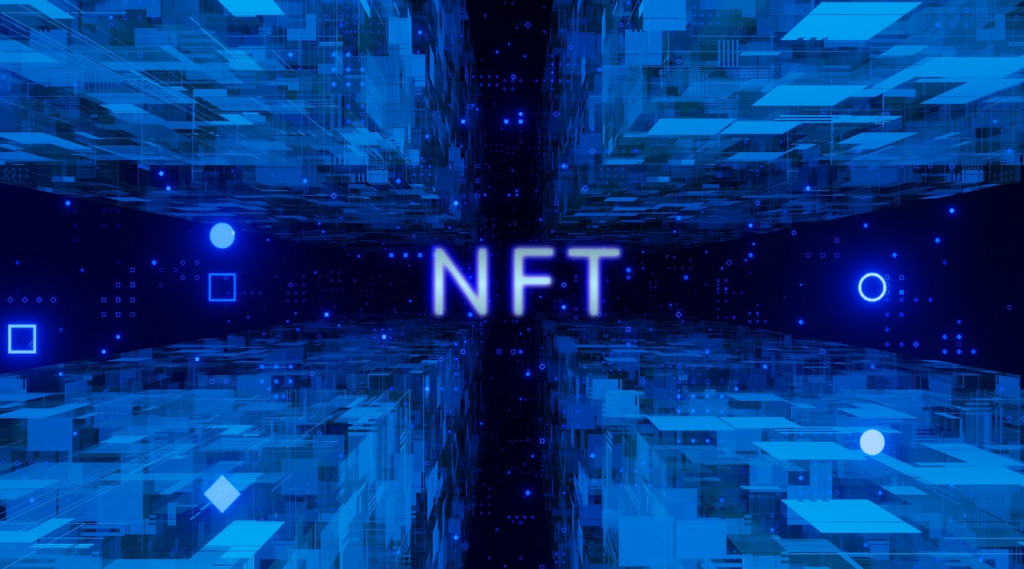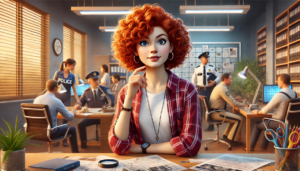Advertisement
In recent years, NFTs (Non-Fungible Tokens) have dominated the headlines, leaving many puzzled as to what exactly they are and why they are causing such a stir. From the art world to music, from games to the entertainment industry, NFTs are permeating many spheres, redefining the way we perceive and trade digital assets. But what exactly are NFTs and what is the potential behind this phenomenon? See below.
What are NFTs?
NFTs, or Non-Fungible Tokens, are a form of digital token that represents unique and non-replicable assets on a blockchain. Unlike traditional cryptocurrencies such as Bitcoin and Ethereum, which are fungible and can be exchanged for each other in identical units, NFTs are unique and indivisible. Each NFT is exclusive and has metadata that distinguishes it from other tokens. This means that each NFT has its own unique value and cannot be replaced by another asset, even if they are similar in nature.
Advertisement
NFTs are based on blockchain technology, with Ethereum being one of the most popular blockchains for creating and exchanging NFTs due to its ability to support smart contracts. Smart contracts allow creators to set specific rules for the ownership and transfer of NFTs, such as the percentage of royalties to be paid to creators whenever the NFT is resold.
They can represent a wide range of digital assets, including digital artworks, videos, music, game items, tweets and even virtual properties. Increasingly, NFTs are being used as a way of authenticating digital ownership and scarcity, creating new opportunities for digital creators to monetize their work and for collectors to acquire unique assets.
Advertisement

The Hype Around NFTs
The hype surrounding NFTs is the result of several trends and factors that have converged to elevate these tokens to a new level of popularity and recognition. Here are some reasons that have contributed to the frenzy around NFTs:
Monetization for Digital Creators
NFTs offer digital creators a new way to monetize their work. Artists, musicians, designers and other creators can sell their work directly to fans, eliminating intermediaries and maintaining greater control over their creative process and revenue.
Digital Scarcity and Authenticity
In a world where everything can be copied and reproduced endlessly on the internet, NFTs provide digital scarcity. Each NFT is unique and authenticated using blockchain technology, which gives buyers the guarantee that they are purchasing a genuine and exclusive item.
Memes and Internet Culture
Many of the most popular NFTs are related to memes and viral internet trends. This creates an immediate connection with a young, internet-connected audience who are willing to spend large sums on digital items that are culturally relevant and highly desirable.
New Business Models and the Creative Economy
NFTs are driving innovation in new business models and creative economies. They are being used in sectors such as art, music, games and entertainment to create new forms of interaction between creators and consumers, as well as to exploit revenue and engagement opportunities that were not possible before.
Celebrating Digital Creativity
NFTs are helping to recognize and value digital creativity as a legitimate form of artistic and cultural expression. They are raising the profile of digital artists and creators, providing them with a platform to reach a global audience and gain recognition for their work.
The hype around NFTs is driven by a combination of factors including monetization capacity for creators, digital scarcity, internet culture and the creation of new business models and creative economies. These elements are fueling a growing interest and excitement around NFTs as a new form of digital asset and creative expression.
The Potential of NFTs
Non-Fungible Tokens (NFTs) have significant potential to transform various areas of the digital economy and contemporary culture. Here are some of the ways in which NFTs can be used and their potential impact:
Digital Property and Authenticity
NFTs enable the representation and transfer of unique digital assets, such as works of art, videos, music and game items. This opens up opportunities for digital creators to monetize their work and for collectors to acquire authentic and unique digital assets. Authenticity is guaranteed by the immutable and transparent nature of blockchain technology, which records every NFT transaction.
Digital Property
NFTs offer a revolutionary way of understanding and managing digital property. Previously, ownership of digital assets was often subject to legal and technical ambiguities. For example, a digital image or song could be easily copied and distributed without affecting the originality of the file. However, the introduction of NFTs allows creators to establish genuine ownership over their digital creations.
With NFTs, an artist can create a unique digital work of art and issue a token that represents ownership of that work. This token is then registered on a blockchain, providing immutable proof of ownership. Thus, the buyer of an NFT is not just acquiring a copy of the digital file, but legitimate and exclusive ownership of that digital asset.
Authenticity
Authenticity is a crucial component of digital property, especially in a world where digital reproduction and distribution are so easy. NFTs provide an elegant solution to this problem, ensuring that each digital asset represented by an NFT is unique and authentic.
The blockchain technology on which NFTs are based offers a transparent and immutable way of recording the ownership and transaction history of each NFT. This means that anyone can verify the authenticity of an NFT and trace its origin back to the original creator.
The authenticity guaranteed by NFTs is especially valuable in the world of digital art, where unauthorized reproduction and forgery are significant concerns. With NFTs, collectors can be confident that they are acquiring genuine and unique digital artworks, valued not only for their aesthetic content, but also for their verified authenticity and origin.
Game Economics and Virtuality
NFTs have enormous potential in the gaming industry, where they can be used to represent virtual items, characters and properties within virtual worlds. This can create internal economies in games, where players can buy, sell and exchange items with other players in a decentralized and transparent way.
Tokenization of Real World Assets
In addition to digital assets, NFTs also have the potential to tokenize real-world assets such as real estate, physical works of art and even company shares. This could make these assets more accessible and divisible, allowing individual investors to participate in markets that were previously out of their reach.
Access and Liquidity
The tokenization of real-world assets involves the digital representation of tangible assets, such as real estate, works of art, vehicles or even shares in companies, by means of NFTs. These assets are then divided into fractions, allowing individual investors to buy parts of them, rather than having to purchase the entire asset.
This divisibility of assets provides greater access to the market for investors of all sizes. Previously, investing in commercial real estate, for example, required a large initial capital. With tokenization, investors can acquire fractions of properties, allowing them to diversify their investments and reduce risk.
In addition, tokenization can increase the liquidity of these real-world assets. By transforming physical assets into digital tokens, owners can offer these tokens on exchange markets, where they can be bought and sold more easily, thus increasing the asset's liquidity.
Efficiency and Transparency
The tokenization of real-world assets can also bring benefits in terms of efficiency and transparency. For example, in the case of real estate, tokenization can simplify the process of buying, selling and transacting property, reducing the need for intermediaries and speeding up the process of transferring ownership.
In addition, the blockchain technology on which NFTs are based provides a transparent and immutable way of recording the ownership and transaction history of each token. This increases investor confidence by providing verifiable proof of ownership and transactions.
Democratization and Diversification
One of the greatest advantages of tokenizing real-world assets is the democratization of investment. By allowing individual investors to buy fractions of high-value assets, such as commercial real estate or valuable works of art, tokenization democratizes access to investment opportunities that were previously reserved only for institutional or high net worth investors.
In addition, tokenization offers the possibility of portfolio diversification on a more granular level. Investors can build diversified portfolios containing a variety of tokenized assets, spreading risk and increasing return opportunities.
Licensing and Intellectual Property Rights
NFTs can be used to represent and manage licenses for intellectual property such as music, films, games and books. This could simplify and automate the licensing and royalty payment process, ensuring that creators are properly compensated for their work, even when it is shared and reused digitally.
Simplifying Licensing
NFTs can drastically simplify the process of licensing copyrighted works. Traditionally, licensing music, movies, games and other digital content involves a series of intermediaries and complex contracts, often resulting in long negotiation periods and high fees.
With NFTs, creators can tokenize their works and automatically incorporate the licensing terms into the smart contracts associated with the NFTs. This means that the terms of use, royalties and other licensing conditions are automatically enforced when the NFT is bought or sold. This significantly simplifies the licensing process, reducing the need for intermediaries and making it easier for creators to reach fair and transparent agreements with licensees.
Copyright Protection
NFTs can also play an important role in protecting copyright and preventing digital piracy. By tokenizing copyrighted works, creators can register the authenticity and ownership of these works on a blockchain, creating an immutable and transparent copyright registry.
In addition, the smart contracts associated with NFTs can include provisions to track and automate the payment of royalties whenever the work is reproduced or distributed. This not only ensures that creators are properly compensated for their work, but also discourages digital piracy, as users are more likely to pay for authentic and legally licensed content.

New Business Models
NFTs are opening up new business models in the field of licensing and IPR. For example, creators can use NFTs to offer exclusive access to premium content or unique experiences, such as early access to songs or movies, meet and greets with artists or digital collectibles.
Digital Arts and Collectibles
NFTs are revitalizing the digital art and digital collectibles market, providing a platform for digital artists and collectors to exhibit and trade their works in a way that wasn't possible before. This is democratizing access to digital art and culture, while creating new revenue opportunities for creators.
NFTs represent a new frontier at the intersection of technology, art, economy and culture. Their potential to create new business models, redefine digital property and promote creativity and innovation is immense and continues to be explored as the technology evolves and becomes more widely adopted.
A technology that is here to stay
NFTs represent an exciting frontier at the intersection of technology, art, economy and culture. Although the current frenzy around NFTs may eventually subside, it is clear that this technology is here to stay, with the potential to fundamentally transform the way we perceive and interact with digital assets and the world around us.
As we continue to explore and experiment with the limits of NFTs, it's exciting to think about what the future holds for this revolutionary form of digital property.
See also: 10 apps to password-protect your apps and ensure more privacy
March 29, 2024

She has a degree in Languages - Portuguese/English, and is the creator of the Escritora de Sucesso website. As a writer, she seeks to expand everyone's knowledge with relevant information on various subjects. At SoMuchToSayToday, she brings news and content ranging from entertainment to the country's economic situation.


